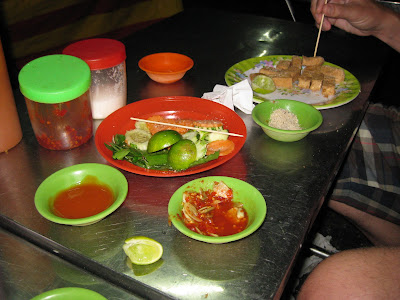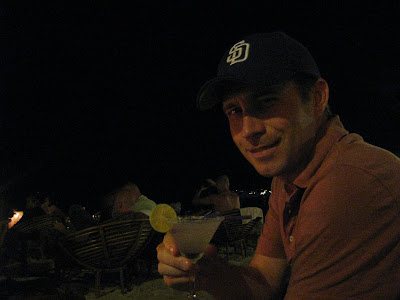The capital of Cambodia is a vibrant, enjoyable city. Formerly known as the pearl of Asia, the city was severely marred during the rule of the Khmer Rouge and the following war with Vietnam. It is impossible to visit Phnom Penh and the whole of Cambodia without becoming aware of its tumultuous and violent recent past. The Khmer Rouge, under the control of Pol Pot, ruled for 3 short years (1975-1978) as a communist government and saw the destruction of much of the country and the death of over 1.7 million Cambodians, out of a population of only 7 million at the time. Most people died due to starvation and malnutrition.
The city today is highly walkable, with a beautiful river walk, nice restaurants, and the Cambodians we have met are friendly, helpful, and have consistent joyous smiles on their faces. We get the sense that this is a people moving forward from a painful past with much optimism.
 |
| National Museum |
 |
| Riverside |
 |
| Water and music show in one of the parks |
 |
| Royal Palace lit up |
The last three days served as a culinary delight. Our first meal was at a street stall where lots of hand gestures got through the language barrier to some delicious fried tofu with spicy dipping sauces.
Our next meal was recommended by the Lonely Planet as a "good cause dining" option. The restaurant, Friends, is a nonprofit that employs former street children as well as does outreach and health education. The food was tapas style and was AMAZING. Pictured below are spinach ravioli, zucchini and cheddar cheese fritters, and sweet potato fries.
Our last meal was at the Boat Noodle Restaurant where we dined on some delicious Thai soup (Tom kha) and a traditional Cambodian dish served untraditionally. Amok is a fish dish usually served in a banana leaf - we had amok made with mushrooms and served in a coconut but with the same coconut and lemongrass flavoring.
 |
| Tom kha Soup and Mushroom running Amok |
We leave Cambodia in the morning for Ho Chi Minh City (Saigon) but we are sad to leave this beautiful, welcoming, and enjoyable country. We highly recommend anyone out there slightly curious about this country to book your tickets now!


















































